Passing Conservation Hut, we descend slowly on timber steps through open forest scattered with tall Eucalypts, Banksias, and Xanthorrea. Black cockatoos screech and squawk in the distance but we’re listening intently to Tim Tranter, our guide from (and owner of) Tread Lightly Eco Tours, as he describes the formation of the Blue Mountains.
Need to Know
This tour can be booked online through Tread Lightly Eco Tours. Medium fitness is required to undertake the trail, and it’s worth keeping in mind the steep sandstone Grand Staircase when making your decision. For more experienced hikers, it can be extended to suit your needs. Groups are no bigger than 6 people, and exclusive tours are available. Lunch is included.
Conservation Hut (Fletcher St, Wentworth Falls) has limited parking, toilet facilities, a cafe, and maps.
Visitors looking for more walks, Aboriginal Discovery Tours, or information about Blue Mountains National Park, should check out the NSW National Parks and Wildlife Service online or contact them on 1300 072 757. Information on booking campsites is also available on the site.
Walk Details
Length (km): 6 km (circuit).
Time (hrs/min): 4 hrs.
Grade: Moderate. Very steep ascents and descents. Tracks can be slippery.
Maps: Maps can be obtained from Conservation Hut.
Return / Circuit / One-Way / Partial Circuit: Circuit.
Closest Town: Wentworth Falls.
Car Access: From the Great Western Highway in Wentworth Falls, turn south onto Falls Road and then take a right at Fletcher Street. Follow this to its end and you will find the Conservation Hut carpark.
“The Blue Mountains aren’t actually mountains,” he explains. “They’re a raised plateau, but I guess that didn’t have quite the same ring to it.”
He does a brilliant job of detailing 300 million years of geological history in terms we can understand. Within minutes of meeting Tim he’d made us feel completely comfortable, and now he was filling our brains with his encyclopaedic knowledge, and managing to do it without being in the slightest bit boring or condescending.
It’s no wonder Tim is like a walking encyclopaedia though. Having lived in the Mountains for 50 years, he’s not only been running eco-tours for 18 years but seems to have his fingers in almost every pie. He lectures in environmental science at Sydney University, works for the Rural Fire Service and WIRES (the Wildlife Information, Rescue and Education Service), sits on various boards regarding the development of the area, and consults for various organisations and government bodies on environmental policy.
Soon we stop off at Queen Victoria Lookout to check out the views over the cliffs of Kings Tableland, and out to Mount Solitary. Tim’s formation story starts to come together in my head as I study the incredible landscape.
“I often release animals that we’ve rescued here with WIRES, even during my tours. People get a bit of a shock when I pull a snake out of my backpack.”
Lori and I look at each other, and then study his face to gauge his seriousness.
“You don’t have one in there now, do you?” I ask. Relief spreads across our faces as he shakes his head, grinning.
As we continue our descent, Tim turns our attention to the many different plant species, describing their characteristics, medicinal and traditional uses, and letting us take in their scent. Tearing a few leaves off each one, he crushes them and gives them to us to sniff.
“In Australia, we don’t smell flowers like they do in other countries; it’s the leafy vegetation that has the scent,” he explains.
By the time we’ve smelled a few different plants, I start to notice how relaxed I’m feeling. I wonder if it’s having an aromatherapy effect, or if it’s just helping me feel more connected to the natural world.
Slowly, the gentle rustling sound of the breeze in the tree-tops is replaced by the roar of a waterfall. Listening more closely, I notice the trickling of a further away stream, and I start to feel the occasional droplet of water refreshing my sweating face. Tim points across the valley to our first glimpse of Empress Falls.
As Empress Lookout draws closer, he points a spot where dry native grasses grow side-by-side with a fresh green fern. It’s as if someone has decided that from this point on will be temperate rainforest. I’ve never seen such a sudden, obvious change in vegetation. We get a better look at Empress Falls from the lookout before continuing on and crossing the base of Isabelle Boden Falls. From here the forest is wet and thick with Bracken fern, tree ferns, and even King ferns. It’s exquisite.
Finally, on the valley floor, we find ourselves near the base of Empress Falls, which drops 30 metres from Empress Canyon (more on that in Part 3). There are a few groups of people scattered around the rocks here, having picnics and swimming in the pool at the base of the falls, so we don’t hang around long. Instead, we cross the creek on the well-placed manmade stepping stones and to where the valley floor drops even further.
It’s here that the scale of the sheer cliffs we’ve descended comes into perspective. As we continue down, taking in some smaller cascades along the way, Tim explains how every metre down is equal to one million years of geological history.
“We’ll descend around 170 metres in total today, so we’re effectively going back 170 million years.” Pointing to the cliff-face in front of us he continues, “You can see the layers in the rock and their differing colours.”
We continue onto the National Pass trail, which hugs the cliff-side between here and Wentworth Falls, and soon pass under Den Fenella Falls. This is the first of eight natural amphitheatres along the National Pass, which are caused by the small waterfalls at the top being blown back and forth by the thermal updrafts that are created in the valley.
“You can see how much the wind moves them around by the width of the amphitheatre,” he tells us. We nod slowly, looking up in awe. “Sometimes you can actually see them flowing straight back up into themselves.”
We stop for lunch at a stunning sandstone outcrop just beside the track, which Tim calls Sid’s Splat. Before we can contain our giggles enough to ask why, he tells us about an unfortunate dog called Sid that once leapt straight off the cliff, never to be seen again.
Having guided these trips for so long, and having hiked for even longer, Tim has developed a few different wraps that are perfectly designed for hiking energy. After one bite, I care little about the energy… It’s so delicious that I inhale it in several large bites, groaning in pleasure. If not for the walk ahead, I’d happily finish Lori’s off for her too.
Before long we get our first glimpse of Wentworth Falls in the distance, tumbling more than 150 metres over two drops. It looks much bigger than that. Having previously only seen it from the top, I can’t believe the height of it. Eventually, we find ourselves at the bottom of the first drop, a picturesque spot where scattered boulders offer perfect spots to sit and rest before ascending the Grand Stairway. We take full advantage, spending 15 minutes taking photos and having a drink and a chat.
But we have to take on the stairs at some stage, so with a deep breath to prepare ourselves, we begin the long ascent. The Grand Stairway is said to be the tallest outdoor staircase in Australia. It’s made up of about 600 steps, zig-zagging up in three stages, at some utterly ridiculous angles.
As Lori and I struggle our way up, Tim climbs ahead without even breaking a sweat. “Keep in mind that I usually do this five times a week,” he reassures us.
Looking for excuses to stop for breaks on the way up, it’s not long before we find a Water dragon sitting on a rock beside the steps. I spend far longer than I usually would, trying to get the perfect photo, before continuing the trudge.
Over a few more rest breaks, Tim fills us in on some of the history of the steps. They were built in the early 1900s by a team nicknamed ‘The Irish Brigade’, using picks, shovels, crowbars, and dynamite. At one stage, he points out the remains of a cradle swing that the construction crew used to swing out from the cliff-face, allowing them to assess where the next part of the track should be built. Looking down over the edge of the steps, I don’t envy them one bit.
The Stairway brings us to the top of Wentworth Falls, and we couldn’t be more relieved for the climb to be over. We briefly check out Weeping rock, and the two lookouts in the car park, before we slowly walk the final kilometre on Shortcut Track back to the car at Conservation Hut.
As Tim returns us to our hotel, we enjoy the last 15 minutes of his company, and try to soak up as much local history as we can. This was absolutely one of the most gorgeous hikes we’ve ever done in the Blue Mountains, but it wouldn’t have been the same without Tim’s knowledge and expertise.
Looking for the rest of the series? You can find all 5 posts in the series right here.
Eat
Housed in a converted auto-repair shop, Leura Garage Café & Restaurant (84 Railway Parade, Leura / Open 7 days, 12-5) is without a doubt my favourite eatery in the Blue Mountains. The staff are friendly and accommodating, and the food, sourced locally as much as possible, is absolutely to die for. We feast on tapas-style dishes like semi-dried tomato and parmesan arancini, a platter of roasted and smoked meats, sticky chicken wings, and Grissini pizza dipped in olive oil and Leura Garage’s own pomegranate balsamic. Much to my excitement, Lori likes a beer these days, and we fall in love with one of their tap beers, the Badlands Pale Ale (brewed in Orange). We love it here so much that we can’t resist our final opportunity to try some different dishes, and return for a second night in a row.
Victory Café (17 Govetts Leap Rd, Blackheath / Open 7 days, 8-4) is our breakfast stop before a few of our days out hiking. They make a delicious coffee, and their yummy breakfast burger is the perfect fuel for a day in the bush. Once again, the staff are lovely and very accommodating, but this seems to be the trend almost everywhere in the Blue Mountains.
Blackheath Continental Deli (32 Govetts Leap Road, Blackheath) seems to be the go-to place for a packed lunch when hiking, so much so that they even have a roll on the menu called the “Bushwalker”. It’s a 10 out of 10 – would eat again.
Sleep
Our favourite accommodation during our week in the Blueys is Waldorf Leura Gardens B&B Resort (02 4784 4000 / 20-28 Fitzroy Street, Leura). Set on magnificent landscaped gardens, they even offer guided tours with their resident gardener (check with reception for dates and times). I take full advantage of the pool (probably why it’s the favourite), which the balcony of our spacious, modern room overlooks. There’s nothing like a swim after bushwalking on a summer day. We also enjoy a late-night game of table-tennis and pool. The pool table is a little worse for wear, but I play so poorly that it makes no difference anyway. The resort has two restaurants but we only make it to one of them, for their excellent buffet breakfast.
Blackheath Motor Inn (02 4787 8788 / 281 Great Western Highway, Blackheath) has a rustic, mountain cottage feel but still feels new. Lori and I feel very cosy in our room, and love that we’ve got a back-door leading out to the garden and our own table and chairs. It’s also great being a short walk from The Gardners Inn when we’re in need of a post-walk beer. The owners, Senga and Eddy, are a great source of local knowledge, especially for bushwalkers.
The Mountain Heritage Hotel & Spa Retreat (02 4782 2155 / Corner Apex & Lovel Street, Katoomba) sits on a hill overlooking Katoomba and some rooms, fortunately ours included, have views over the Jamison Valley. Despite hosting a wedding on the night of our stay, staff manage to make us feel like we’re their only guests.
Redleaf Resort (02 4787 8108 / Corner Evans Lookout and Valley View Roads, Blackheath) is perfectly located for hikers, just down the road from Evans Lookout, trailhead for the Grand Canyon Walk and the cliff-top track to Govetts Leap, among others. They have a games room, heated undercover pool, and playground.
During our stay in the Blue Mountains, we were guests of Blue Mountains Lithgow & Oberon Tourism, NPWS, Tread Lightly Eco-Tours, High & Wild Adventures, Scenic World, and Blue Mountains Guides. As is always the case, this has no influence over the opinions I present on Bushwalking Blog.
Have you checked out the Blue Mountains? Walked the National Pass or taken a trip with Tread Lightly Eco Tours? Got any tips or tales to tell? Please let us know by commenting below.


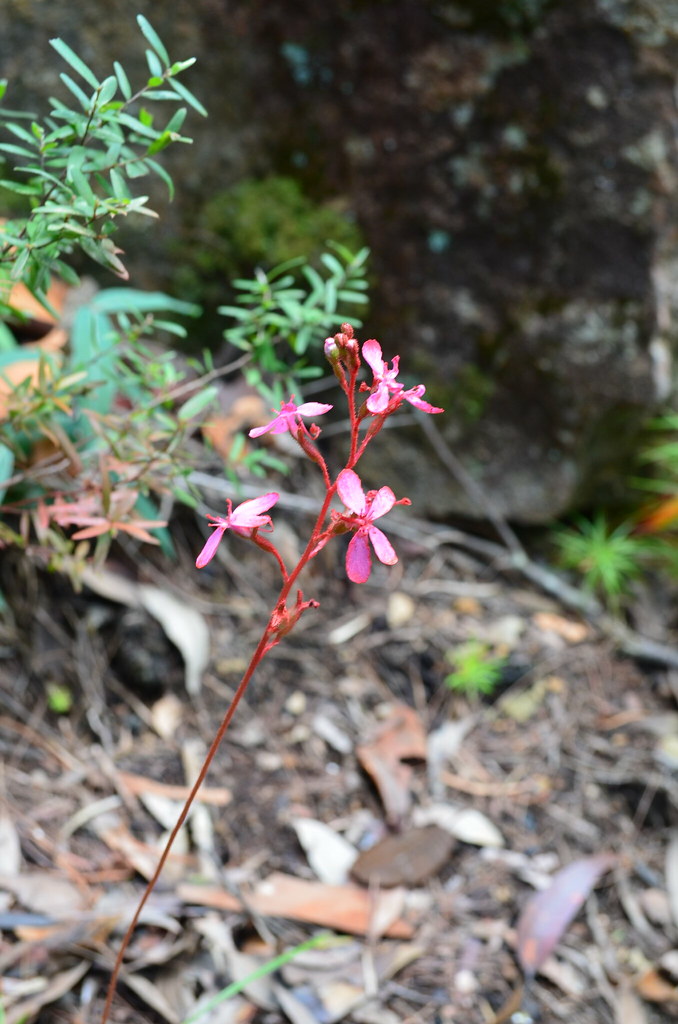
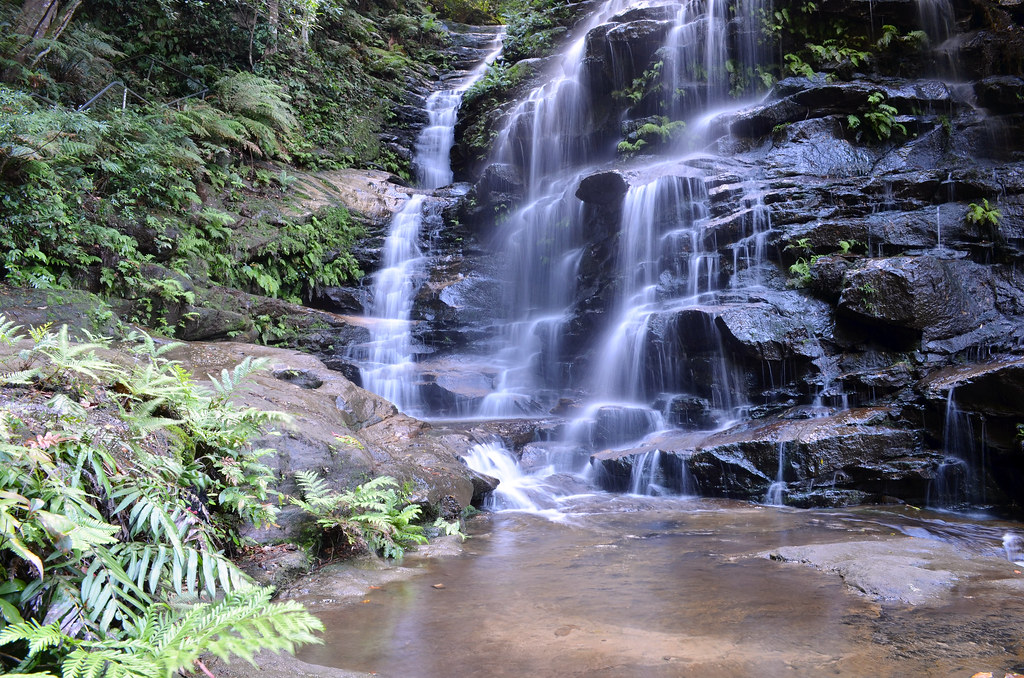
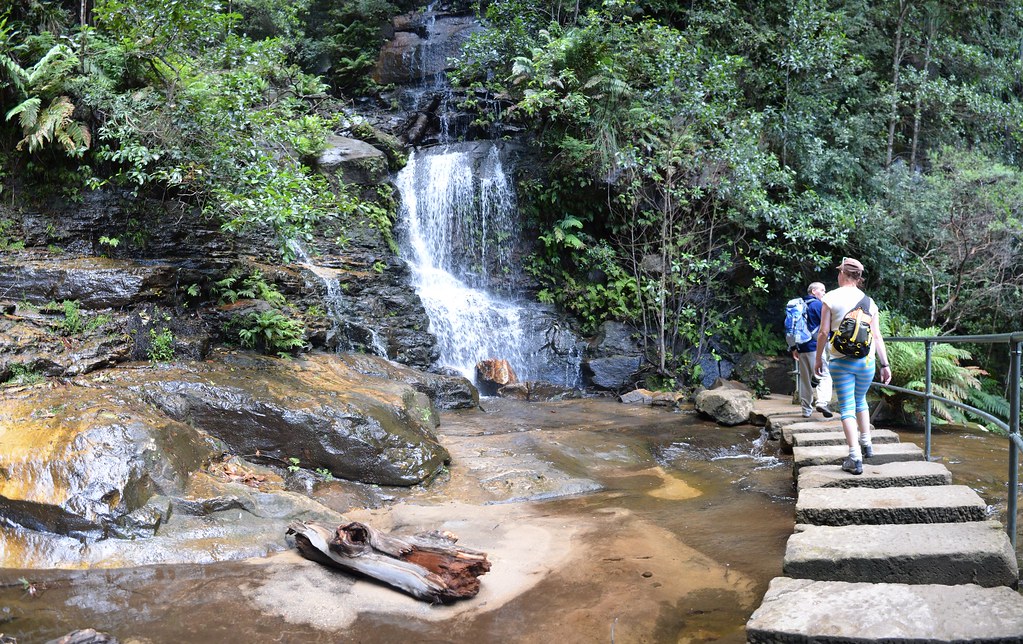

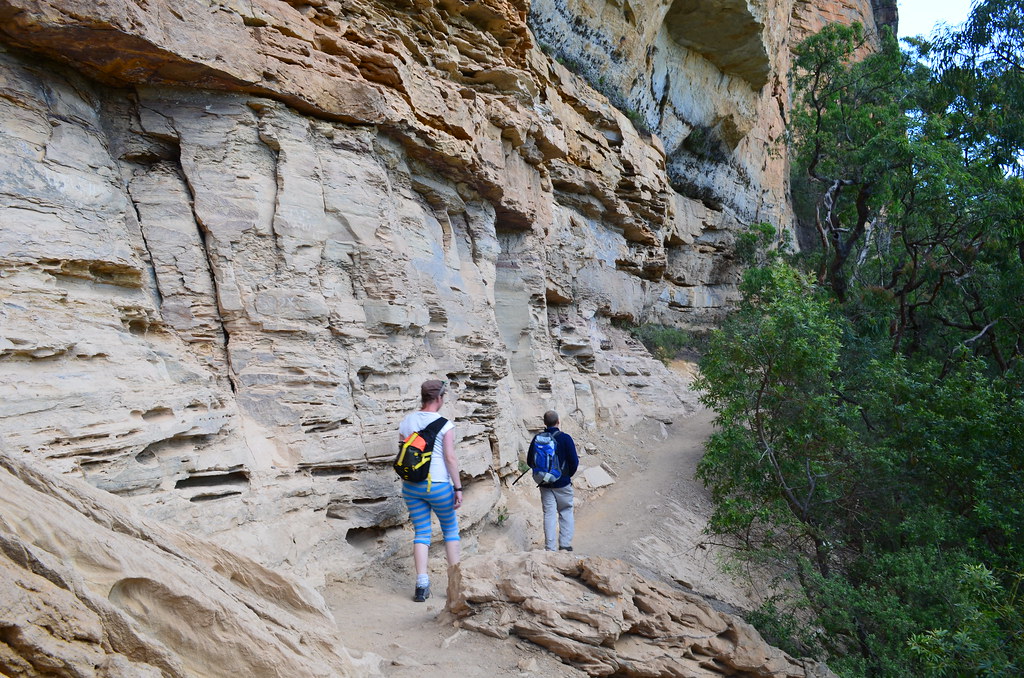

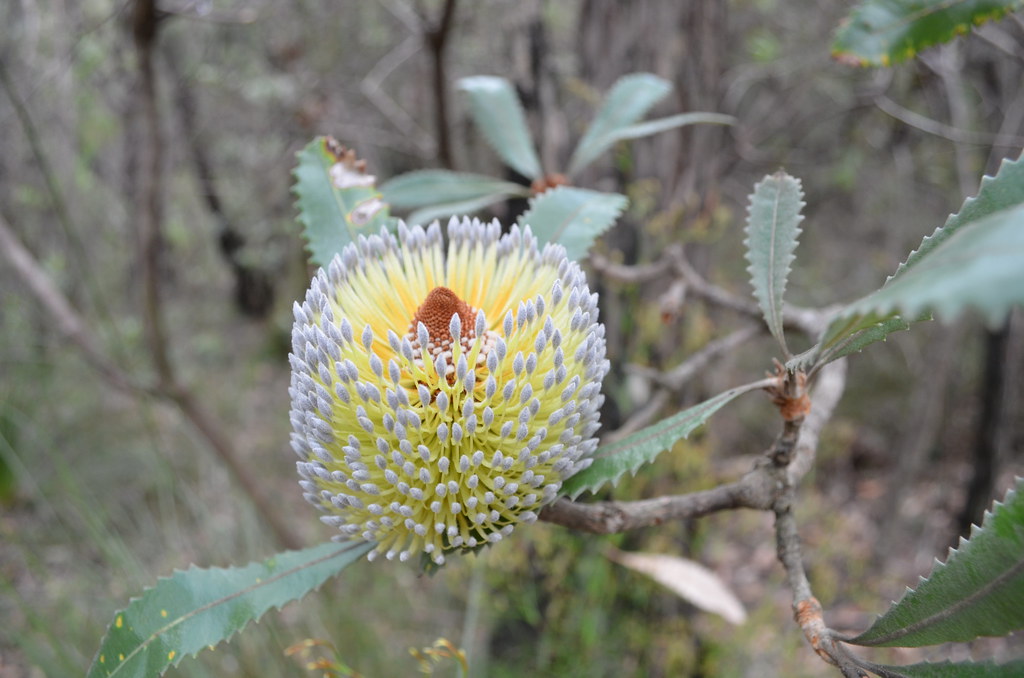
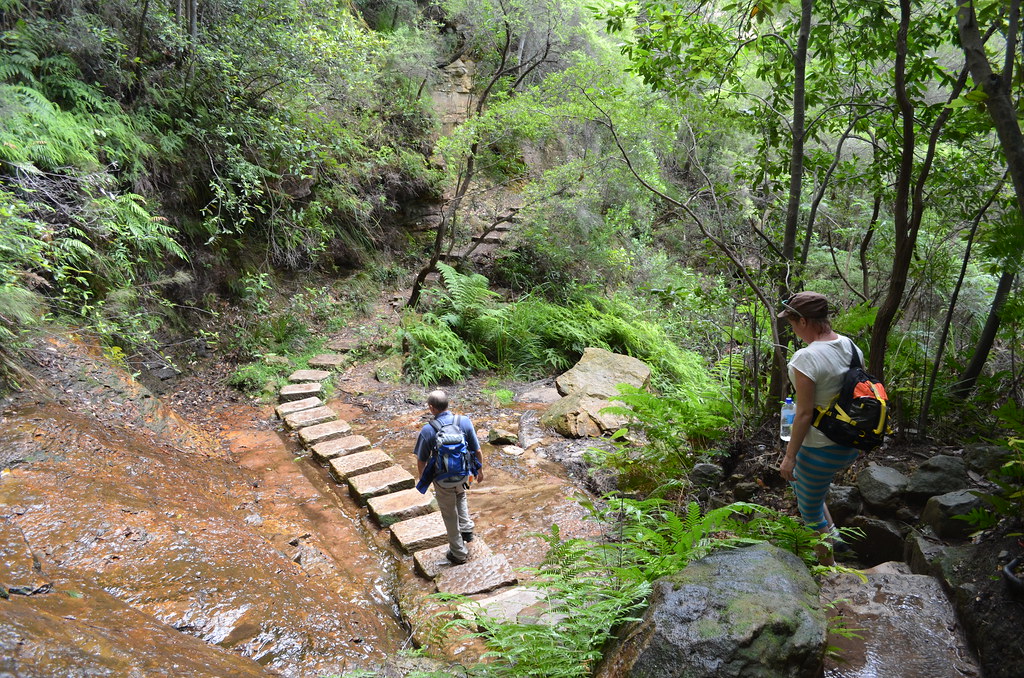


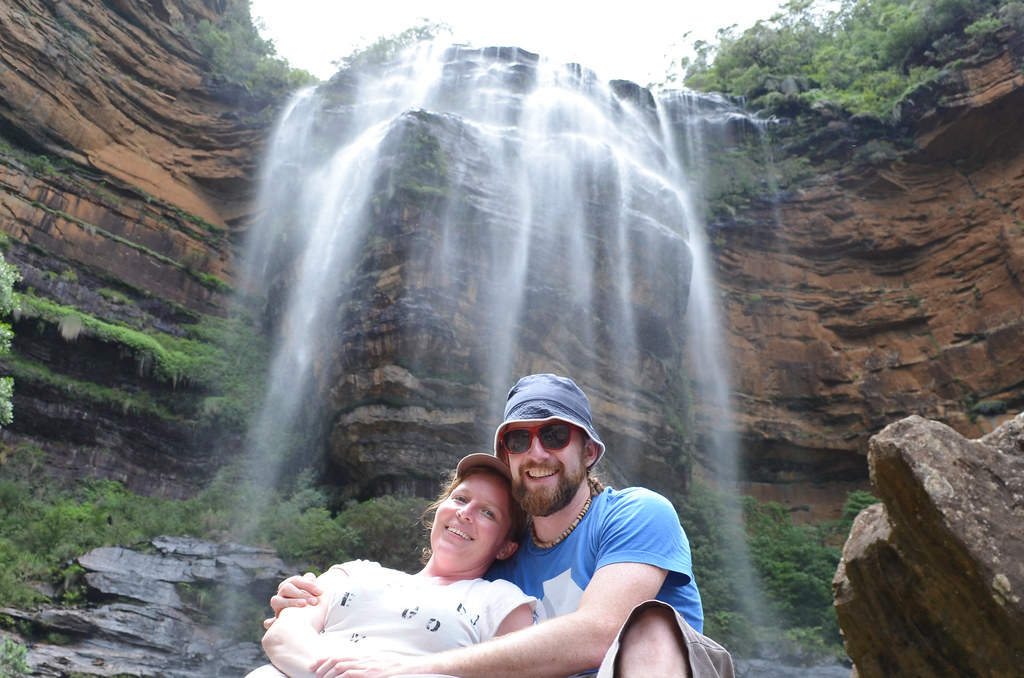
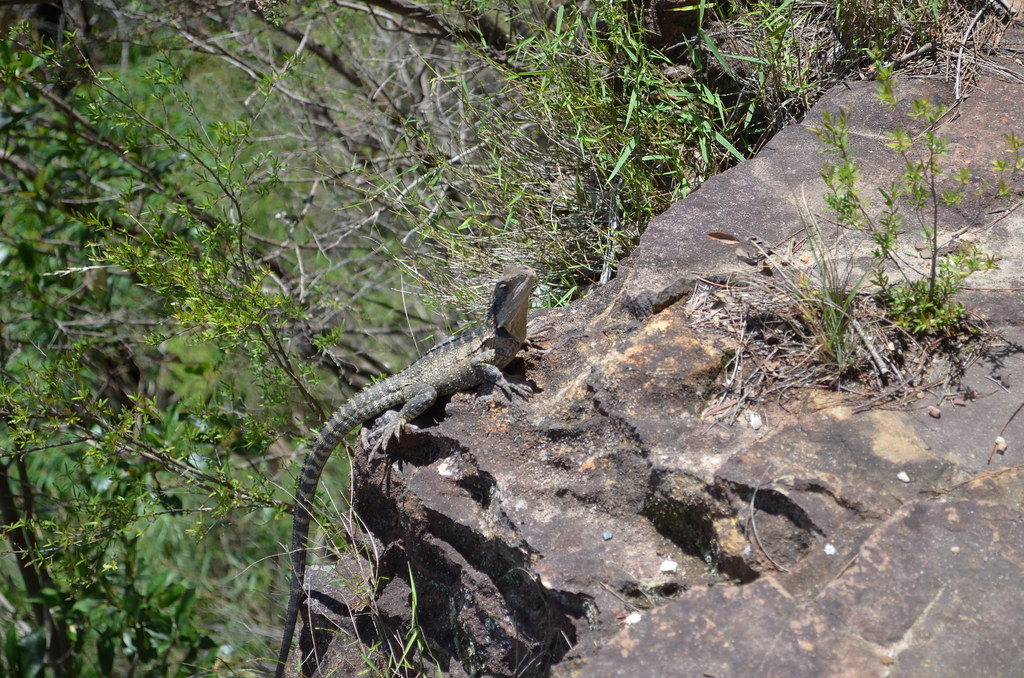




Fantastic information and tips for our return trip! Thanks Neil 🙂
Glad you enjoyed, Dayna! Cheers for the comment 🙂
The guided walk sounds great. If not guided it can be done in reverse starting at Wentworth Falls station and then following Darwins Walk and down the stairs. At the end you can either take one of the walks across to the falls and back along Darwins Walk or along the streets. Can also add in the Nature Walk. Afterwards I recommend Schwartz patisserie, just along from the railway station, for afternoon tea, especially if you’ve done all the walking I’ve suggested.
Hey Ken,
Thanks heaps for the info and the food suggestion. Might have to pay the patisserie a visit on my next Blueys trip.
Cheers
Neil
Wow! What a beautiful place. Not sure how I’d cope with the 600 steps though! I may need to stop and take a few hundred photos along the ascent! It is interesting how the scenery can change so dramatically. I find that a lot in some of the national parks up here. One minute you’re in dense rainforest and then you’re out in exposed rocky country dotted by grass trees. Makes for a very interesting walk. Such majestic scenery. I loved the last picture of you and Lori. You look so happy together (even if you were exhausted!) Great post, Neil. 🙂
Haha that’s the great thing about bringing a camera, Jane… There’s always an excuse to stop for a breather without looking like you’re totally stuffed. Thanks for the kind words about the post, too. Glad to hear Lori and I look happy. We so are! 🙂
Cheers
Neil
I loved this review Neil, sounds like you and Lori got to soak up the best of the blue mountains. (Only marginally homesick today reading this hehehe). You’ve really shown me up, despite my family being in the area, I have NEVER walked up those stairs. Ever. I always think I’m doing enough walking down them! lol. I might have to try it out when I’m back in the winter…
Sorry to make you homesick, Jess! Hehe I guess that means I’m doing my job right though. 🙂 The steps are definitely worth doing though. Very rewarding. Hope you’re enjoying your travels!
Cheers
Neil